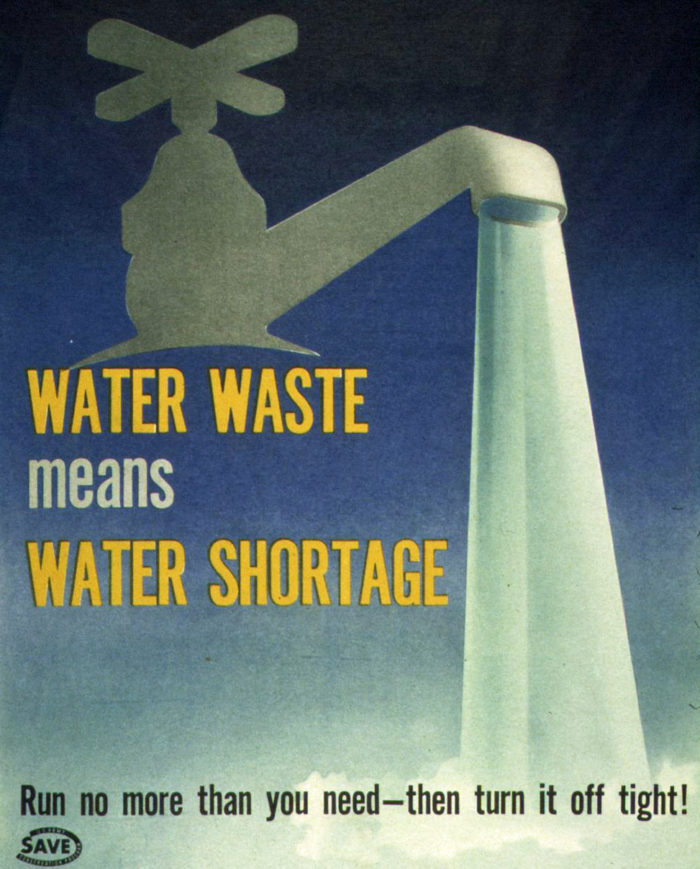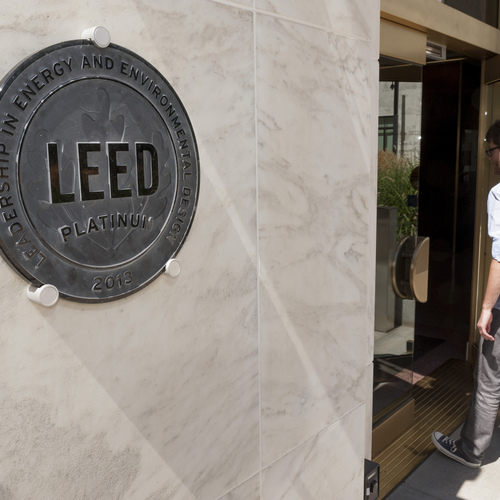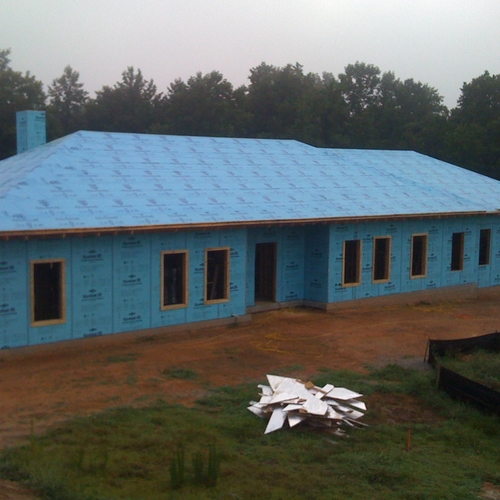
Image Credit: U.S. National Archives and Records Administration
While news reports have recently focused on California Governor Jerry Brown’s executive order, in response to that state’s long-running drought, seeking to reduce overall water use by 25 percent, there may be more to be learned from how the small Town of Hampstead in Maryland responded to its own water crisis in 2008.
Despite the fact that the U.S. uses less water than it did in 1980, availability of potable water is increasingly an issue. According to the EPA, at least 36 states are anticipating local, regional, or statewide water shortages this year.
In 2008, the 6,323 people residing in the Town of Hampstead, for the first time since it was incorporated in 1888, were experiencing severe water stress. The town considered restricting water use and faced a moratorium on all new building. The town commissioners sought a proven response that was easy to articulate and that could be readily and quickly implemented.
With the town water system running out of water, the town created a Groundwater Conservation District “encouraging environmentally sensitive and sustainable ‘green’ design and construction methods, minimizing impervious surface, maximizing groundwater recharge and protecting the aquifer.”
Within that District, outdoor watering and irrigation was strictly prohibited. Washing of cars, boats, campers, windows, and the like, was prohibited except by a hose equipped with a flow-restricting device.
Fixing leaky pipes was key
Cognizant that every six days, U.S. water utilities lose an entire day’s water from leaking pipes, the town started an aggressive program of locating and fixing leaks, including offering a bounty of up to a $9,000 credit on water bills to customers who located a water leak on their property.
And by ordinance 2008-449, Hampstead Town Code 135-150 was amended to provide:
Any new building or structure shall comply with the Leadership in Energy and Environmental Design (LEED) standards for silver certification or a standard deemed equivalent by the Commission. The developer shall be responsible for the cost of the Town hiring a consultant to certify that the site plans and construction drawings conform to the LEED or other approved environmental standard. The Commission may establish a higher standard if deemed appropriate by the Commission.
The ordinance was tied to LEED 2009 NC which included for the first time WEp1 as a prerequisite; WEp1 stipulates that all projects must reduce water use by at least 20 percent. And by requiring that projects be certifiable at the Silver level, land owners were encouraged to pursue credit WEc2, where a 30 percent reduction in water use garners two points, with up to four points available for a 40 percent reduction.
Owners were also advised to pursue credit WEc1 which is available for a 50 percent reduction in potable water use for irrigation.
No need to reinvent the wheel
Using LEED as a tool to restrict water use obviated the need to create some new regulatory scheme from scratch. The ordinance met with little, if any, negative comment because most accepted that government has a proper role in responding to a crisis and, in part, because the plumbing industry was familiar with LEED. And that projects need only be LEED “certifiable” and not actually certified ameliorated the concern that LEED, a voluntary third-party rating system, was being misused.
The LEED water reduction prerequisite and credits provide an ideal tool for reducing water use. Carefully drafted, LEED can provide the standards, in an ordinance, for restricting water use. More simply put, LEED can be the ideal liquidity strategy.
Stuart Kaplow, an environmental attorney, is legal counsel and past chair of the U.S. Green Building Council Maryland. This post originally appeared on April 5 at Green Building Law Update.
Weekly Newsletter
Get building science and energy efficiency advice, plus special offers, in your inbox.














2 Comments
Results?
Interesting, but was the program a success? What is the current situation?
Leed
It seems a bit like bringing in your whole toolbox to tighten one leaky fitting. Would this mean that because an area had a problem with water supply builders would have to go through the hoops of trying to get Leed points for their project for things like proximity to stores, use of sustainable materials and the provision of bike racks?
Log in or create an account to post a comment.
Sign up Log in